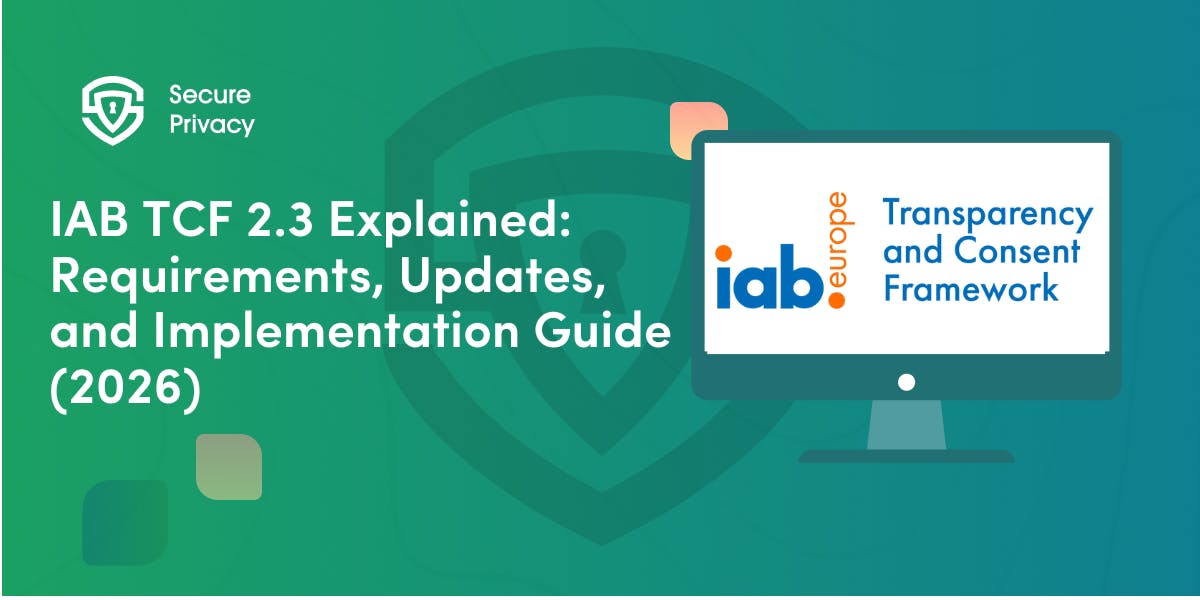What Advertisers Need to Know About Google’s Third-Party Cookie Deprecation
Explore the impact of third-party cookie deprecation on digital advertising. Learn about Google's Privacy Sandbox, industry challenges, and alternative solutions for a privacy-first future.
Third-party cookies were introduced in the early days of the internet as a way to enhance user experience by remembering preferences and login details.
Over time, they became indispensable tools for advertisers, allowing them to track users across multiple websites, build detailed profiles, and deliver personalized ads.
However, as data privacy issues came to the forefront, these cookies were increasingly perceived as invasive, leading to regulatory crackdowns and a shift towards more privacy-conscious practices.
Before widespread data protection regulations, cookie tracking operated with minimal oversight. Companies freely collected vast amounts of user data without consent, tracking individuals across websites for targeted ads. Transparency was low, and users had little control or awareness over how their data was being used.
As a response to the introduction of data protection laws like the GDPR and the CCPA, some browsers, like Safari (in 2019) and Firefox (in 2020), promptly restricted cookies in their navigation by default. Google went for a slower, more calculated approach.
However, the journey towards phasing out third-party cookies has been far from straightforward. In 2020, Google announced its intention to phase out third-party cookies in Chrome, with the goal of completing the process by 2022. This timeline was later extended to 2024 to ensure a smooth transition. While Google's commitment to improving user privacy remains unwavering, concerns about the readiness of alternative solutions and potential disruptions to the advertising ecosystem led to multiple delays.
In February 2024, the UK Competition and Markets Authority (CMA) ordered Google to pause Third-Party cookie phaseout until it addressed anti-competitive concerns.
The recent move to disable third-party cookies for 1% of Chrome users globally marks a significant step towards this goal, allowing the industry to begin testing and adapting to a new reality. The initial 1% rollout allowed for testing and feedback, but also highlighted the scale of the challenge ahead.
Third-party cookies have been a well-established staple for targeted advertising, and replacing this infrastructure requires not just new technology, but also a fundamental shift in how digital marketing operates.
Privacy Sandbox: A Bumpy Ride
Enter the Privacy Sandbox — Google’s proposed replacement for third-party cookies. This set of APIs is designed to enable personalized advertising while preserving user privacy. The idea is to shift data processing to the browser, reducing the need for third-party trackers. The Privacy Sandbox represents a thoughtful approach to balancing the needs of advertisers with the privacy concerns of users. By processing data within the browser, Google aims to minimize the risks associated with third-party tracking.However, the Privacy Sandbox has not been without its critics.
A central (and controversial) component of Privacy Sandbox’s involved the phasing out Third-Party cookies, a technology the ad industry relies on to track and gather user behaviors across websites anonymously.
The IAB Tech Lab, among other critics, has pointed out areas where the Sandbox falls short. Some in the industry have expressed concerns about potential biases and technical challenges, such as latency issues and the complexity of the auction setup. Of the 44 basic digital advertising use cases analyzed by the IAB Tech Lab’s Privacy Sandbox Task Force only a small handful were deemed as remaining feasible using the APIs in the Google Chrome Privacy Sandbox. The Privacy Sandbox ad auction uses the outcomes of one auction to inform the next. According to some industry leaders, including publishers and tech companies, this process overlooks the conventional functions of ad servers and supply-side platforms, potentially solidifying Google’s dominance in the market.
Companies like Criteo have invested heavily in testing the Privacy Sandbox, hoping to adapt to the new environment. However, even the most dedicated testers have reported an ambiguous level of satisfaction towards the results. For instance, Google's own experiments, which compared cookie-based targeting to new Sandbox signals, still relied on third-party cookies for attribution—a sign that the technology may not yet be ready for full-scale deployment.
On the other hand, some industry players, like The Trade Desk, argue that the Privacy Sandbox might throw a wrench into the gears of web advertising in general. They advocate for alternative solutions, such as open identity products like Unified ID 2.0, which offer a different approach to user tracking and targeting.
Despite these concerns, it is important to acknowledge that Google has been and continues to be responsive to feedback, continually refining the Privacy Sandbox to address stakeholder needs. The Privacy Sandbox will continue to evolve. More on this below.
The Financial Impact on Publishers and Advertisers
The financial implications of third-party cookie deprecation are significant, particularly for publishers. Reports indicate that when third-party cookies were disabled in Chrome without enabling the Privacy Sandbox, publishers experienced a 34% drop in programmatic revenue through Google Ad Manager. Even with the Sandbox in place, the revenue loss was still around 20%, highlighting the challenges that lie ahead.
These figures are concerning for an industry that relies heavily on programmatic advertising. The inability to track users effectively not only diminishes the value of ad placements but also makes it harder for advertisers to justify their spending. If third-party cookies are gone, the industry must adapt to new methods of targeting and measurement, or risk significant revenue losses.
It’s important to note that these conclusions are drawn from a limited sample size, namely, the 1% that were randomly selected to test cookie phase-out. Google’s cautious approach, based on feedback and iteration, allows for the Privacy Sandbox to evolve in real time in response to challenges.
Google’s Potential Shift in Strategy
Amidst the ongoing debate, Google has hinted at a potential shift in strategy.
As of now, the indefinite postponing of cookie deprecation is on the table. Instead, Privacy Sandbox will be developing a tool for third-party cookies that ‘elevates user choice’. This tool would give users more control over their data.
Little is known as of now about the nuts and bolts of this future tool, other than it involving one or multiple browser-related consent touchpoints regarding third-party cookies in Google Chrome’s web-browsing experience as a whole. This tool could still have far-reaching implications. For advertisers, the availability of user data could decrease, making it harder to target ads effectively, as such consent touchpoints could result in a significant opt-out, resulting in de facto cookie deprecation indirectly.
This shift also raises questions about the future of the Privacy Sandbox. If third-party cookies remain available, even in a limited capacity, will the industry fully embrace the Sandbox, or will it continue to rely on existing methods? The answer to this question could shape the future of digital advertising for years to come.
The Future of Digital Advertising Without Third-Party Cookies
As the industry considers the possibility of a cookieless future, a few alternative solutions are being explored. Identity resolution products offer one potential path forward, allowing advertisers to track users without relying on third-party cookies. These solutions use first-party data, encrypted identifiers, and consent-based tracking to build a more privacy-friendly advertising ecosystem.
At the same time, contextual advertising is making a comeback. By targeting ads based on the content of a webpage rather than user behavior, advertisers can reach relevant audiences without infringing on privacy. While these methods may not offer the same level of precision as third-party cookies, they provide a viable alternative in a world where user privacy is paramount.
Ultimately, the future of digital advertising will depend on how quickly the industry can adapt to these changes. Companies that invest in new technologies, embrace privacy-friendly practices, and prioritize user consent will be best positioned to succeed in this new environment.
Conclusion
The potential deprecation of third-party cookies marks a significant turning point for the digital advertising industry. As Google leads the charge with Privacy Sandbox the entire ecosystem must adapt to a new reality where user privacy takes center stage. While the transition will undoubtedly be challenging, it also presents an opportunity for companies to innovate and redefine how they engage with consumers. By staying informed, embracing new technologies, and prioritizing transparency, the industry can navigate this shift and emerge stronger than ever.
Digital Advertisers can get a competitive advantage by using a Google-Certified Consent Management Partner committed to staying ahead of every development in the realm of third-party cookie tracking, while offering a high level of customization in banner design. Seamless, ahead-of-the-curve integration with Google’s privacy infrastructure fused with attractive banners, incentivizing user opt-ins. Book a call with us to learn more
Get Started For Free with the
#1 Cookie Consent Platform.
No credit card required

IAB TCF 2.3 Explained: Requirements, Updates, and Implementation Guide (2026)
Your ad revenue dropped 40% overnight. Google stopped bidding on your inventory. Your DSP partners flagged your traffic as non-compliant. The culprit? An outdated TCF 2.2 consent string after the February 2026 enforcement deadline.
- Legal & News
- Cookie Consent

The SaaS DPA Guide: GDPR Requirements, Subprocessors, and Automation
Your enterprise deal stalled in legal review for three weeks while procurement demands a comprehensive data processing agreement, your legal team scrambles to understand GDPR requirements, and your sales team watches the quarter-end deadline approach with increasing anxiety.
- Legal & News
- Data Protection

ISO 27701 Explained: Requirements for Privacy Governance
Privacy teams face mounting pressure. Regulators demand proof of systematic data protection. Customers expect transparency. Board members want assurance that privacy risks won't derail operations.

